Quentin Tarantino, known for his admiration of violent aesthetics in film, has recently published a collection of reviews titled "Cinema Speculation". Within the first week of its release, the book entered the top five of the New York Times best-seller list for non-fiction. In the book, Tarantino presents a unique perspective on a list of thriller movies from the 1970s.
Tarantino has stated that once he completes ten films, he plans to retire from filmmaking and focus on writing novels and film literature. He considers the two volumes of "Kill Bill" as one film, which means he has directed nine films so far. However, he has already published two books, "Once Upon a Time in Hollywood" in 2021 and "Cinema Speculation" in November 2022. Both books have received positive feedback, especially "Cinema Speculation", which quickly entered the top five of the New York Times non-fiction best-seller list.
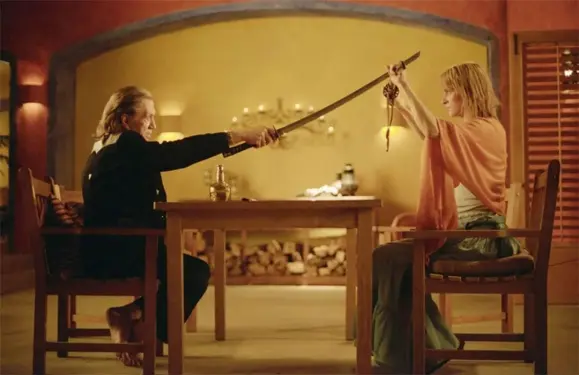 In "Cinema Speculation", Tarantino selects several American films released between 1968 and 1981, including "The Wild Bunch", "The Outfit", "Bring Me the Head of Alfredo Garcia", and "Taxi Driver". These movies are the "key films" from his childhood and teenage years, and he offers his analysis and commentary on them. Tarantino interweaves these movie reviews with autobiographical essays skillfully, creating a thought-provoking and insightful collection of reviews and a vivid memoir of his film-watching experiences. This book provides film enthusiasts and Tarantino fans a glimpse into his tastes and serves as a great recommendation guide. The Daily Telegraph commented that reading the book is "like flipping through the yellowed pages of an old issue of International Screen magazine" and suggested that Tarantino could be an excellent Hollywood gossip columnist.
In "Cinema Speculation", Tarantino selects several American films released between 1968 and 1981, including "The Wild Bunch", "The Outfit", "Bring Me the Head of Alfredo Garcia", and "Taxi Driver". These movies are the "key films" from his childhood and teenage years, and he offers his analysis and commentary on them. Tarantino interweaves these movie reviews with autobiographical essays skillfully, creating a thought-provoking and insightful collection of reviews and a vivid memoir of his film-watching experiences. This book provides film enthusiasts and Tarantino fans a glimpse into his tastes and serves as a great recommendation guide. The Daily Telegraph commented that reading the book is "like flipping through the yellowed pages of an old issue of International Screen magazine" and suggested that Tarantino could be an excellent Hollywood gossip columnist.
Violence on the Screen
When Quentin Tarantino was nine years old, his mother Connie's boyfriend, professional football player Reggie, took him to see the crime thriller film "Black Gunn" (1972). Reggie was black and took him to a cinema in the black community, giving him $20 to buy whatever snacks he wanted. "Black Gunn" starred the black actor Jim Brown and the audience was excitedly shouting along with the plot. Quentin was the only white person in the theater, and he was infected by the enthusiasm, feeling a rebellious joy and excitement like eating the forbidden fruit. The hero in the film and the man who took him to watch the film aroused his fascination with male norms and masculinity, and he felt the pleasure of violence for the first time.
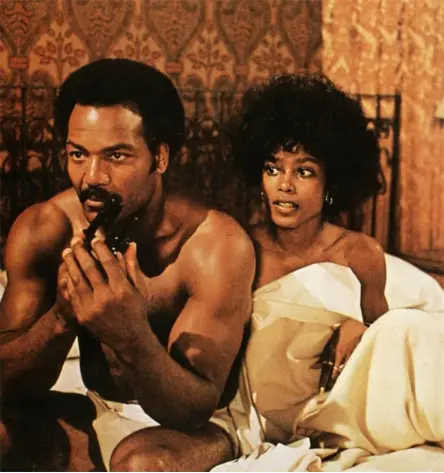
Quentin thought his mother would marry Reggie, but he never saw Reggie again. Whenever Reggie was mentioned, his mother just shrugged and said, "Well, he's around." "My Best Friend's Birthday" begins with this memory and this film. Quentin wrote, "To some extent, I've spent my entire life trying to recreate that experience through films." That experience mixed violence and tenderness, and he couldn't get enough of it.
The films recommended and discussed in "My Best Friend's Birthday" all have blood "spraying into the camera lens." For example, the crime thriller film "Dirty Harry" directed by Don Siegel and starring Clint Eastwood. The film begins with a hitman lurking on the roof of a skyscraper, using a rifle's scope to spy on a young woman swimming in a pool below. Then, she is shot in the back and the water in the pool turns red. Before this, there were rarely such casual killing scenes in Hollywood films.
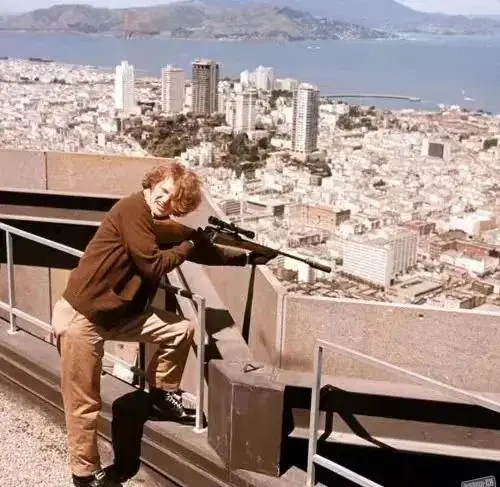
Quentin has a pathological obsession with on-screen violence. In his first film "Reservoir Dogs" (1992), there is a scene where Mr. Blonde dances around a police hostage who is tied to a chair with a razor blade in his hand. He effortlessly cuts off the police officer's ear and taunts him with it. In "The Hateful Eight," sadistic characters torture their victims to the backdrop of music, treating their cruelty as entertainment. These images are chilling, and as a result, the UK banned the video release of "Reservoir Dogs" for several years.
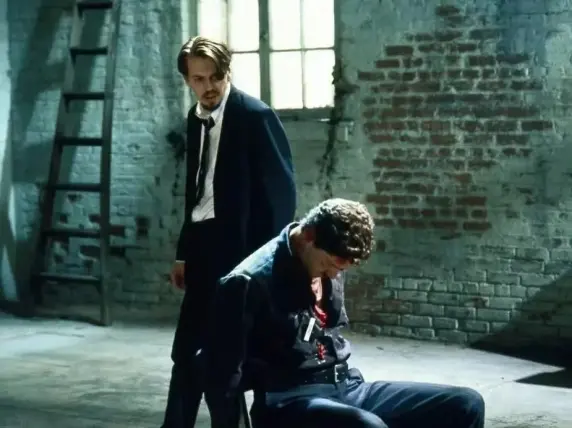
Quentin holds "Rolling Thunder" (1977) in high regard, saying that it is "the best combination of character study and action film to date," which ignited his passion for directing. He recalls interviewing the director of the film, John Flynn, when he was 19 years old. He found all the people named "John Flynn" in the phone book and called them one by one until he found the right person.

Violence is the thread that runs through Quentin's films, and his books are full of joyous descriptions of violent scenes from movies he has watched. Henry Hathaway's "Kiss of Death" (1947) shows an elderly woman in a wheelchair being pushed down a flight of stairs, and Fritz Lang's "The Big Heat" (1953) has a woman's face being splashed with hot coffee. Quentin believes that compared to the violence in the films directed by Don Siegel in the 1970s, pushing someone down the stairs or throwing coffee on them is hardly worth mentioning.
In his book, Quentin Tarantino refers to both H.G. Clouzot and Sam Peckinpah as "the most professional practitioners of film violence." He mentions their works such as "The Beast from 20,000 Fathoms" (1956), "Straw Dogs" (1971), and "The Getaway" (1972). The cover of "Film Comment" magazine features a behind-the-scenes photo of Peckinpah and actor Steve McQueen on the set of "The Getaway."
Tarantino comments on the two masters: "Clouzot's violence is more about depicting cruelty rather than depicting blood and gore in a straightforward way." Peckinpah is known as the godfather of violent action movies. His western films favored non-realistic techniques, using slow-motion shots to capture intense action scenes, creating a visual effect that he called "ballet of blood." His masterpiece "The Wild Bunch" (1969) became a representative work of western films. Tarantino writes, "The red blood spurting out from Bloody Sam is closer to liquid ballet and dark red visual poetry... The impact of 'The Wild Bunch' is not only what we see on the screen but also how we react to what we see. It's beautiful and moving. These bastards risked everything for a teammate they didn't even like. It's really beautiful."
Violence has been a driving force for not only Tarantino but also many other directors since the birth of cinema. Edwin S. Porter's western film "The Great Train Robbery" (1903) was the earliest movie to be written and edited. Despite being only 12 minutes long, the film contained numerous violent scenes, including beatings, ties, boxing, stone throwing, and throwing a train conductor off the train. The film's ending features a famous shot of a bandit frowning and shooting directly at the camera. While the entire film is in black and white, this shot was colored to show the bandit wearing a green shirt and a red and white floral neckerchief, which excited moviegoers at the time. This film is considered one of the most significant "leaps" in American film production because it tells a story based on extreme violence.
The film "Un Chien Andalou" (1929) by Spanish director Luis Buñuel is considered a classic of surrealism. It begins with a man lazily smoking and sharpening his razor, then holding the blade up to a woman's eye before cutting it open, causing thick, viscous liquid to spill out and the eye to resemble a soft-boiled egg.
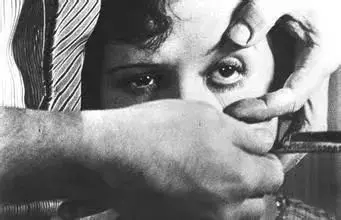
Quentin Tarantino has a near-romantic admiration for these pioneering filmmakers. His Hollywood is a paranoid, male-dominated monastery.
The second part of the article:
https://www.peliplat.com/en/article/10003100









Share your thoughts!
Be the first to start the conversation.